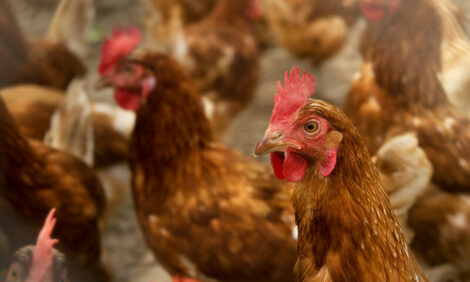



UV Light Cuts Salmonella on Eggshells
US - Pulsed ultraviolet (UV) light has potential to decontaminate egg shell surfaces of Salmonella enteritidis without adversely affecting egg quality, according to research at Pennsylvania State University.Nene Keklik and colleagues at Pennsylvania State University have published a paper in the August 2010 issue of Journal of Food Protection on their studies into pulsed UV light inactivation of Salmonella Enteritidis on egg shells and its effects on egg quality.
The majority of S. Enteritidis outbreaks have been related to the consumption of raw or undercooked eggs or egg-containing foods, according to Keklik and co-authors. Therefore, the US Department of Agriculture mandates egg washing for all graded eggs by use of a detergent solution and sanitiser. These agencies and the egg industry have been investigating alternative decontamination techniques, which could better serve the public, minimise costs, and benefit both the public and the industry.
Pulsed UV light is an emerging technology that is used to inactivate microorganisms quickly. In this study, the effectiveness of pulsed UV light was evaluated for the decontamination of eggshells.
Eggs inoculated with S. Enteritidis on the top surface at the equator were treated with pulsed UV light from one to 30 seconds, at a distance of 9.5 and 14.5cm from the UV lamp in a laboratory-scale, pulsed UV light chamber. Three eggs were used per treatment in each repetition, except for quality measurements, which involved six eggs per treatment in each repetition.
A maximum log reduction of 5.3 colony-forming units (CFU) per square centimetre was obtained after a 20-second treatment at 9.5cm below the UV lamp at a total dose of 23.6 ± 0.1 J/cm2, without any visual damage to the egg.
After a 30-second treatment at 9.5 and 14.5cm, the temperature of eggshell surfaces increased by 16.3 and 13.3°C, respectively. Energy usage increased up to 35.3 ± 0.1 and 24.8 ± 0.1 J/cm2, after 30-second treatments at 9.5 and 14.5cm, respectively.
The effect of pulsed UV light treatments on egg quality was also evaluated. Pulsed UV-light treatments for three, 10, and 20 seconds at either 9.5 or 14.5cm did not change the albumen height, egg shell strength or cuticle presence significantly (P<0.05).
This study demonstrated that pulsed UV light has potential to decontaminate eggshell surfaces, concluded Keklik and co-authors.
Reference
Keklik, N.M., Demirci A., Patterson P.H. and Puri V.M. 2010. Pulsed UV light inactivation of Salmonella Enteritidis on eggshells and its effects on egg quality. Journal of Food Protection, 73 (8): 1408-1415.
Further Reading
| - | You can view the full report (fee payable) by clicking here. |











